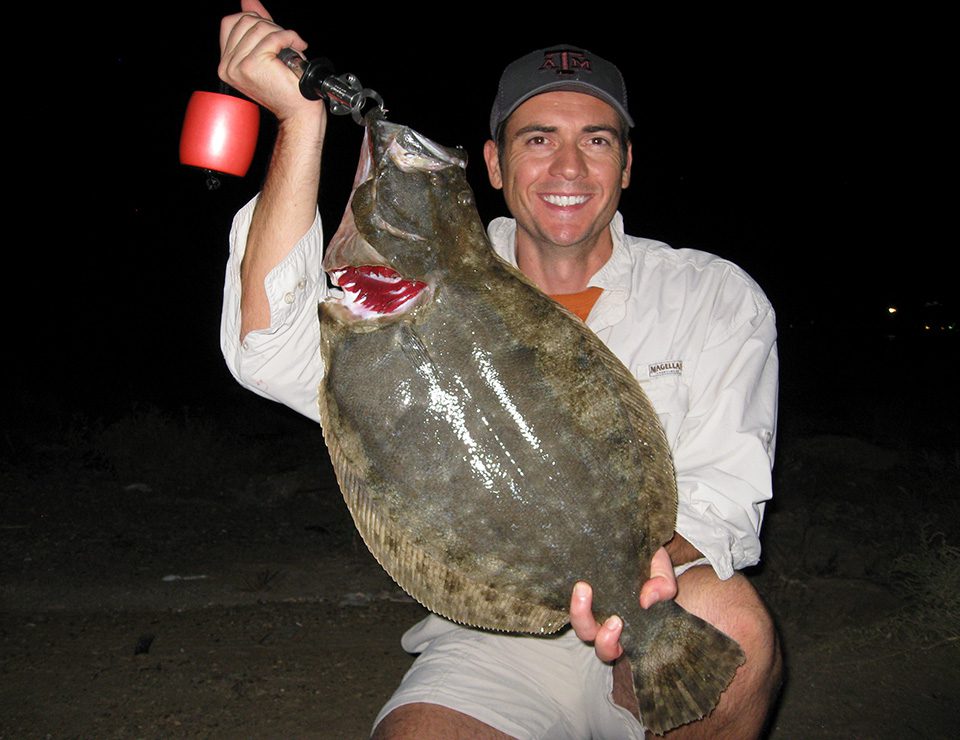
For many inshore and shore-based anglers, October means flounder and big redfish. Along the southern coasts of the U.S., both the Atlantic and Gulf, big breeder redfish and doormat flounder are piling into the sounds and beaches.
The big reds are fueling up to spawn, while flounder are fattening up for the winter. Both arrive on the scene with big appetites, and the season can bring both big numbers of fish as well as some of the largest fish of the year.
One of the coolest parts of this overlapping migration is anglers can target both species in the same trip. The tactics and tackle will vary depending on where you are and which one you’re after, but there is no need to change locations. Whether on-foot or on the trolling motor, fishing jetties can lead to a fall bonanza.
Jetties are magnets for game fish because they are home to so much forage. You can bet both flatfish and bull reds will be roaming the rocks right now. Reds will be cruising and working all around the rocky area, while flounder will be found in the sand right up on the transition to rock.
Heavier is better when you’re fishing around abrasive rock for big reds, and 20-pound mono or braid is a bare minimum. Once they reach a size where they’re considered bulls, redfish are catch-and-release deal, so get them in quick, get your photo and let them go. When using live or cut bait, use a circle hook on a Carolina rig. Reds will eat just about any cut bait, and they rarely pass up a live finger mullet or a quartered blue crab. Just let that bait sit on the bottom.
Big flounder will eat cut bait, but they prefer their meals to be alive. Slowly drag your live shrimp, finger mullet or really any other baitfish across the bottom on a Carolina rig with a 2/0 to 4/0 kahle hook. Flounder will often take a bait and sit back down in the sand, taking a minute to ingest it. If you suspect you’ve been bit, wait five seconds or longer before setting the hook hard. There aren’t many anglers who would throw back a flounder dinner, so gut-hooking them isn’t as much of a concern when you’re on fish that exceed the minimum size limit where you fish.
You can go lighter with your rods, reels and line when targeting flounder as opposed to redfish. But you can also just fish the same set-up a little differently. It might not seem as sporting, but it will get the job done, and you might be glad to have a little extra oomph to haul them off the rocks.